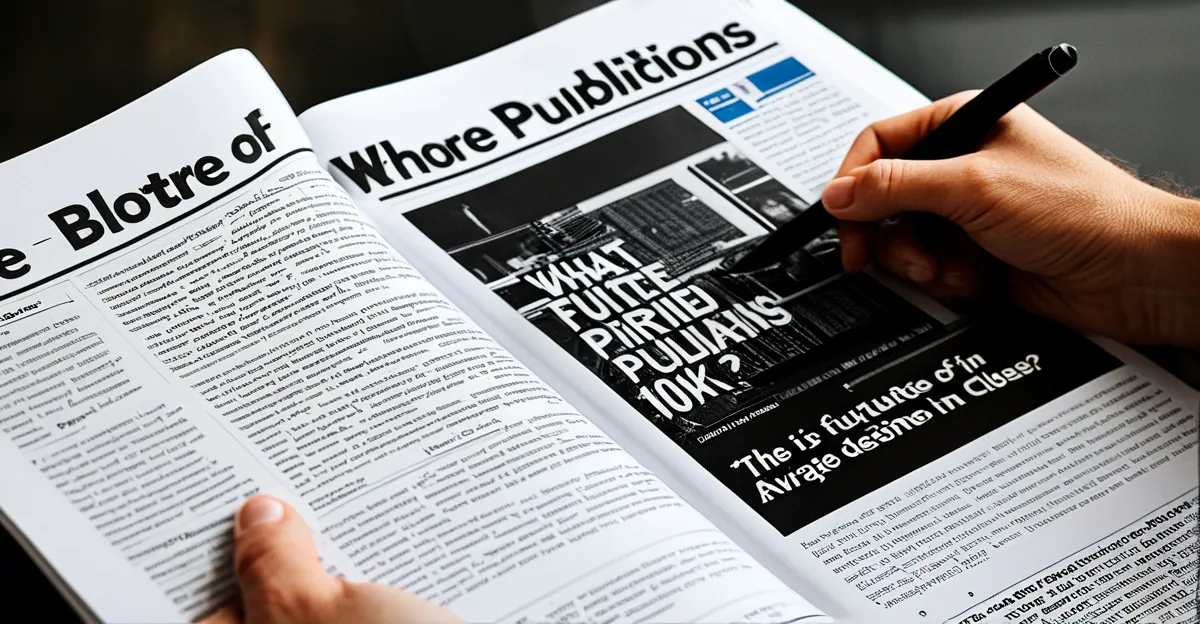Current State of Print Media in the UK
Print media UK continues to face significant transformations as circulation figures reveal a clear decline. Newspaper statistics UK indicate that many traditional titles have seen steady drops in daily and weekly sales over recent years. This trend reflects a broader shift in consumer habits, with magazine readership UK also experiencing decreased print numbers, particularly among younger demographics.
Despite these declines, print media UK holds a distinctive role in society. Newspapers and magazines remain valued sources for in-depth analysis, investigative journalism, and curated content that digital platforms sometimes lack. This importance is underscored by specific segments of the population who favor print’s tangible, focused experience over the fast-paced digital environment.
This might interest you : How is the UK managing immigration policies post-Brexit?
Recent shifts in consumer behaviour and reading habits show a preference for more accessible and convenient formats. While print consumption wanes, many UK readers still appreciate magazines and newspapers for their editorial quality and trusted reporting. Print media UK outlets are also adapting by blending print with digital channels, responding to changing expectations without abandoning their traditional strengths.
In summary, although circulation figures and magazine readership UK reflect challenges, print media UK continues to serve a critical societal function. Its role is evolving in tandem with changing preferences, maintaining relevance by emphasizing quality content and trusted journalism.
Also read : What Are the Most Common Misunderstandings About the UK’s Political Landscape?
Challenges Facing Print Media
Print media in the UK grapples with significant challenges of print media primarily driven by the rise of digital platforms. The digital disruption UK has fundamentally altered how audiences consume news, with many turning to instant, accessible online sources rather than traditional newspapers or magazines. This shift has intensified competition, forcing print publishers to rethink their strategies.
One of the most pressing issues is the sharp decline in advertising revenue. Historically, advertising has been a major financial pillar for print media UK, but the migration of advertisers to digital channels has severely reduced income streams. This trend has complicated the sustainability of newspapers and magazines, especially smaller, regional titles that lack robust digital alternatives.
Audience demographics have also shifted. Younger readers show a clear preference for digital content, making it difficult for print media UK to attract and retain this vital segment. As older readership ages, the challenge becomes twofold: holding onto loyal yet shrinking audiences while cultivating interest among digital-native generations.
Overall, these challenges of print media come from an evolving market marked by changing consumer preferences, revenue pressures, and technological advancement. Addressing these issues requires innovation and adaptability if print media UK is to withstand continuing pressures.
Adaptation Strategies of UK Publications
In response to mounting challenges of print media, many UK publications are embracing print media innovation to stay relevant. A prominent approach is adopting digital-first strategies. This means prioritising online content delivery, often supported by paywalls which help generate sustainable revenue. For example, leading newspapers have shifted their focus toward subscription models, creating a steady income stream while retaining quality journalism.
Another key adaptation involves the development of hybrid publishing models UK, which merge traditional print editions with enriched digital experiences. These models allow media outlets to maintain their loyal print readership while capturing digital-savvy audiences. By integrating multimedia content, interactive features, and social media, publishers extend engagement beyond static print pages.
Integration efforts often include enhancing the relationship between print and online offerings. Publications encourage readers to use both formats—print for in-depth reading and digital for timely updates. This synergy helps maximize reach and meets evolving consumer preferences characterized by diverse media consumption habits.
Successful case studies illustrate these strategies in action. Notably, some UK magazines have launched companion apps that supplement print copies with interactive elements like videos and AR content, illustrating effective digital transformation. These instances highlight how embracing technology and flexible content delivery can propel traditional publishers forward despite ongoing market pressures.
Industry Expert and Insider Perspectives
Insights from media expert opinions UK and publisher interviews provide valuable clarity on the evolving landscape of print media UK. Leading editors emphasize print’s distinctive ability to foster trust and depth, characteristics harder to replicate online. This uniqueness underpins print media’s continued relevance despite digital disruptions.
Experts often highlight that the challenges faced by print media UK are not merely technological but also cultural and strategic. They suggest focusing on quality journalism, as it remains print’s core strength and differentiation. Industry insiders also discuss how print and digital should coexist rather than compete, advocating hybrid approaches tailored to diverse audience habits.
Analysis of print media future insights reveals cautious optimism about survival and adaptation. Publishers acknowledge revenue pressures but view innovation—such as enhanced editorial standards and integrated platforms—as vital to resilience. The consensus suggests that while print circulation may decline, strategic repositioning can preserve its societal role.
The Role of Technology and Emerging Trends
Emerging media technologies UK are increasingly shaping the landscape of print media UK by introducing innovative methods to engage readers. Integration of augmented reality (AR) in print media enables publications to superimpose interactive digital content onto traditional pages, enriching the reader experience beyond static text and images. This technology transforms magazines and newspapers into dynamic platforms, offering videos, animations, and interactive elements accessible through smartphones or tablets. Such advancements resonate especially well with younger audiences accustomed to multimedia consumption, helping bridge the gap between print and digital formats.
Sustainability efforts are another crucial aspect of emerging media technologies UK. Modern printing techniques prioritize eco-friendly inks, recycled paper, and energy-efficient processes to reduce environmental impact. This commitment aligns with growing consumer demand for responsible production, enhancing print media UK’s appeal while meeting contemporary ecological standards. Employing these technologies also addresses one of the challenges of print media: remaining relevant by combining tradition with innovation.
Digital editions of magazines and newspapers have become a standard trend, complementing print copies with accessible and timely content updates. These digital editions often incorporate interactive features, making reading on screens more engaging. The balance between print and digital offerings leverages each medium’s strengths by preserving print’s tactile value while embracing online interactivity. Consequently, print media UK benefits from increased reach and diversified revenue opportunities through subscription models tied to digital platforms.
Together, the adoption of emerging media technologies UK, including AR in print media and sustainable printing methods, demonstrates a clear path forward. These trends underline how print publications can evolve by integrating digital transformation with traditional practices, expanding their relevance in a rapidly changing media environment.
Projections for the Future of Print Media
The future of newspapers UK and magazine survival hinges significantly on evolving reader preferences and ongoing digital transformation efforts. Forecasts based on current data suggest that while print circulation will continue to decline, print media UK is unlikely to vanish entirely. Instead, its print media outlook UK points toward a more specialized role that leverages its unique strengths, such as in-depth investigative reporting, trusted editorial voice, and the tangible reading experience print uniquely provides.
What long-term scenarios could we expect for print publications? Industry analysis and subscriber trends indicate that a hybrid model combining both print and digital will dominate. This approach caters to diverse consumer segments, blending traditional magazine readership UK with innovative online content delivery. For example, selective titles may reduce print frequency or shift to premium, collectible editions to sustain appeal among loyal readers.
Maintaining relevance means print media UK must continue to adapt creatively. Investment in quality journalism, coupled with carefully integrated digital channels, supports a sustainable business framework. This dual strategy helps publishers navigate the challenges of audience fragmentation, advertising revenue fluctuations, and technological disruption. Consequently, the future of newspapers UK and magazines looks less like obsolescence and more like evolution—positioning print as a complementary part of a multifaceted media ecosystem.






